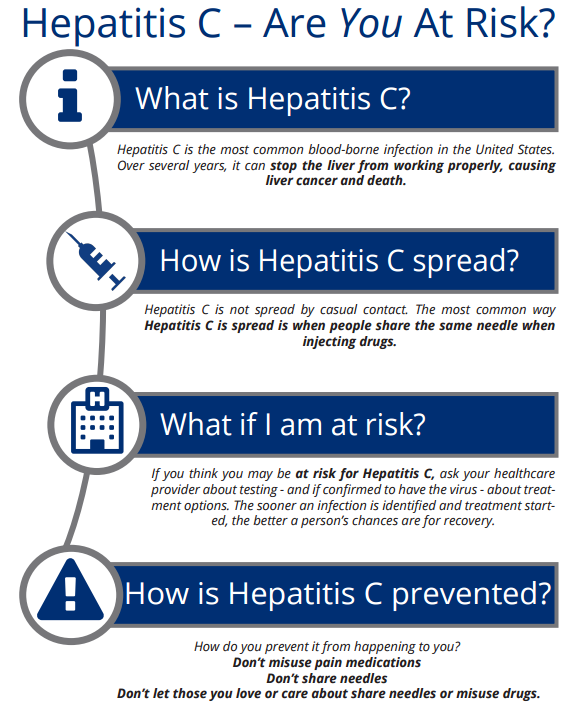Hepatitis C is a virus (HCV) which can cause serious liver disease. In the early stage of infection, some people will have symptoms of illness including fever, nausea, abdominal pain, or jaundice; however, many persons will not have any symptoms at all.

The virus is spread from exposure to an infected person’s blood. Exposure can occur when sharing needles or other injection drug equipment.
According to a new study published in the journal JAMA Network, researchers from the University at Albany School of Public Health. et al, report that nine states accounted for about 52 percent of all people living with hepatitis C (California, Texas, Florida, New York, Pennsylvania, Ohio, Michigan, Tennessee and North Carolina) from 2013 to 2016.
Nine states contained 51.9% of all persons living with HCV infection (California [318 900], Texas [202 500], Florida [151 000], New York [116 000], Pennsylvania [93 900], Ohio [89 600], Michigan [69 100], Tennessee [69 100], and North Carolina [66 400]); 5 of these states were in Appalachia.
In addition
Of 13 states in the western United States, 10 were above this median. Three of 10 states with the highest HCV prevalence were in Appalachia.
The highest rates of infection were frequently in states heavily impacted by the opioid crisis.
The authors conclude the prevalence of HCV infection varies widely in the United States. Highest rates are frequently in states deeply affected by the opioid crisis or with a history of increased levels of injection drug use and chronic HCV infection.
Related:
- Hepatitis C: Three new strains found in Africa
- Hepatitis C in the US: 2.4 million Americans living with it
- Study finds hepatitis C treatment could be cut in half in 50 percent of patients
- Opioid use leads to heroin and injection-related epidemics of Hepatitis C and HIV: Study
- Opioid crisis: Leading national groups call on Congress for $100 million to fight HIV, hepatitis C
- Hepatitis C: Increase in cases linked to increases in opioid injection


